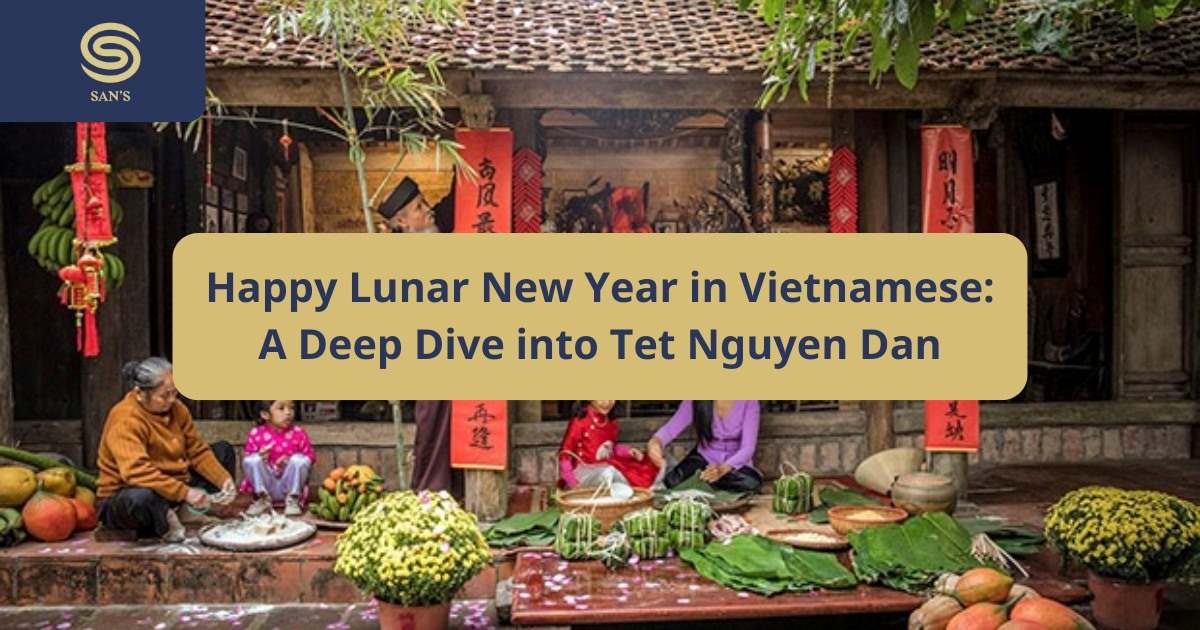As the vibrant tapestry of the Vietnamese Lunar New Year unfolds, understanding how to convey warm wishes becomes paramount. Learning how to say “happy lunar new year in vietnamese” is more than just a phrase; it’s a bridge to the heart of Vietnamese culture. This article will guide you through the essence of Tet, from its historical roots to the cherished traditions of expressing heartfelt greetings and celebrations, all while embracing the spirit of “happy lunar new year in vietnamese.”
Introduction to Tet Nguyen Dan
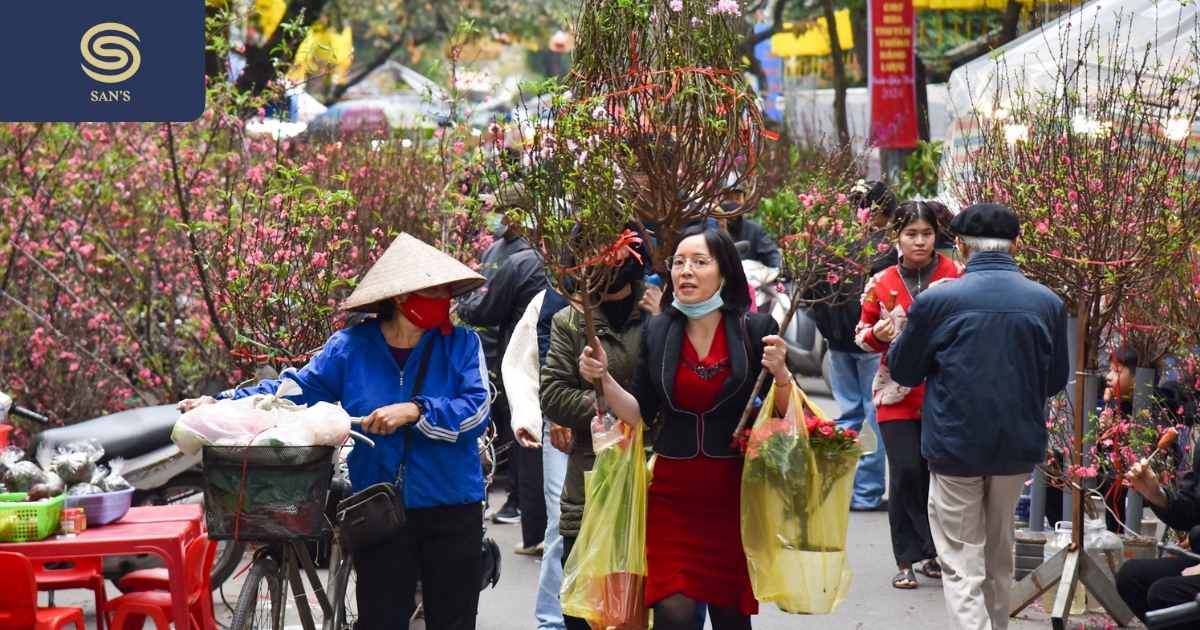
Tết Nguyên Đán, often simply referred to as Tet, is not just another holiday; it is the most significant celebration in Vietnamese culture. More than a mere change in the calendar, Tet marks the beginning of the Lunar New Year, a time of renewal, reflection, and joyous family reunions. The anticipation surrounding Tet is palpable throughout Vietnam, with preparations beginning weeks in advance, symbolizing the deep-seated cultural importance of this festival.
As the year draws to a close, the Vietnamese community embarks on a journey of cleaning, decorating, and cooking, getting ready to welcome the new year. This is the perfect time to think about how to extend warm greetings and to understand how to say happy lunar new year in vietnamese. It’s a time to reflect on the past year and look forward to the one ahead with optimism and hope. The sentiment of happy lunar new year in vietnamese is felt throughout the land as families gather to usher in the new cycle of life.
The History and Significance of Tet Nguyen Dan
To truly appreciate Tet, one must delve into its rich history. The roots of Tết Nguyên Đán can be traced back thousands of years, and its significance goes far beyond the celebration of a new year. It is deeply intertwined with agricultural practices and spiritual beliefs. In ancient times, Tet was a way to pay homage to ancestors and to ensure a bountiful harvest. Over time, the festival has evolved, yet its core essence remains unchanged: a celebration of family bonds, tradition, and the start of a new cycle of life. The deep cultural importance makes knowing how to say happy lunar new year in vietnamese crucial for anyone wishing to engage with the Vietnamese people.
The way one expresses “happy lunar new year in vietnamese” shows understanding and respect for this tradition. Tet is not just about moving forward; it’s about respecting the past. This reverence makes the phrase “happy lunar new year in vietnamese” even more meaningful. As people across Vietnam embrace this time, they are essentially embracing their cultural identity. To experience Tet is to be enveloped in history, tradition, and heartfelt expressions of “happy lunar new year in vietnamese“.
Chúc Tết: Vietnamese New Year Greetings
One of the most beloved aspects of Tet is the tradition of “Chúc Tết,” which involves exchanging New Year greetings. These greetings go beyond simple pleasantries; they are heartfelt wishes for health, prosperity, and happiness in the coming year. The common phrase “Chúc Mừng Năm Mới” translates directly to “Happy New Year,” while other popular wishes include “An Khang Thịnh Vượng” (prosperity and well-being) and “Vạn Sự Như Ý” (may all things go as you wish).
These are just a few examples of the rich repertoire of greetings used during Tet. While the phrase happy lunar new year in vietnamese is increasingly common, these traditional greetings still hold a special place in the hearts of the Vietnamese people. It’s a moment to express genuine care and hope for the well-being of family, friends, and neighbors.
The feeling behind a genuine “happy lunar new year in vietnamese” is reflected in these traditional wishes. During this time, the warmth and sincerity of these wishes contribute to the festive atmosphere, making it an essential component of the Tet experience. Learning these traditional greetings alongside knowing how to say happy lunar new year in vietnamese shows deep appreciation for the Vietnamese culture.
The Customs of Giving Tết Greetings in Vietnam
The act of giving Tết greetings is more than just reciting words; it’s a cherished custom that involves a specific etiquette. When offering greetings, it’s important to consider the age and status of the person you are addressing. Younger individuals will typically extend greetings to their elders first, showing respect for their seniority. These greetings are often accompanied by a slight bow or a clasp of hands, further highlighting the reverence associated with this custom. Visiting family members and friends to offer happy lunar new year in vietnamese greetings is a vital part of the tradition. It’s a time for gathering, strengthening family bonds, and spreading joy.
These visits are not just about exchanging greetings; they are about sharing moments of connection, laughter, and love. Understanding the tradition behind extending wishes for a happy lunar new year in vietnamese adds layers of depth and meaning to the experience. The feeling of extending good wishes is a cornerstone of Tet and something that should be experienced. When people extend the sentiment of happy lunar new year in vietnamese, they are participating in a practice that carries generations of tradition. The act of giving greetings is a way to honor this tradition and share it with others.
Common Questions about Tết Nguyên Đán in Vietnamese
Many people have questions about Tet, especially those who are not familiar with Vietnamese culture. One common question is, “What exactly is Tết Nguyên Đán?” As we have mentioned, it is the Vietnamese Lunar New Year. Another frequent question is, “How do you say ‘Happy New Year’ in Vietnamese?” While “Chúc Mừng Năm Mới” is the traditional answer, the phrase happy lunar new year in vietnamese is increasingly used and understood, especially by younger generations.
Another question might be, “Why is Tet so important to the Vietnamese people?” The answer lies in the rich tapestry of cultural traditions, family values, and the symbolic beginning of a new year. The cultural importance makes it clear why the phrase “happy lunar new year in vietnamese” is a part of a significant experience.
The importance of happy lunar new year in vietnamese is highlighted by the various cultural aspects of the celebrations, including family reunions, traditional meals, and expressions of good wishes. The traditions are so important and make the act of extending a greeting like happy lunar new year in vietnamese a special thing. Understanding these cultural practices only enhances one’s appreciation of this amazing celebration.
Traditional Dishes During Tết
No Tet celebration is complete without the abundance of traditional dishes that grace every Vietnamese table. The star of the culinary show is undoubtedly Bánh Chưng (square sticky rice cake) and Bánh Tét (cylindrical sticky rice cake), both meticulously prepared and filled with savory delights. Thịt Kho Hột Vịt (braised pork and eggs) is another must-have, often enjoyed with steamed rice or pickled vegetables. Mứt Tết (candied fruits and vegetables) offers a sweet contrast, symbolizing good fortune for the coming year. These dishes are not just food; they are a form of art, each with its own unique history and significance.
Sharing these meals is a symbol of unity and family bonding, emphasizing the importance of gathering and sharing joy during Tet. The act of eating these meals is an experience deeply intertwined with the cultural spirit of Tet and the heartfelt message of a happy lunar new year in vietnamese. The connection between these dishes and happy lunar new year in vietnamese is undeniable. The meals, combined with the sentiments of a happy lunar new year in vietnamese form the crux of the holiday. The traditional foods are part of the cultural fabric of the holiday, and just like learning how to say happy lunar new year in vietnamese, they are worth experiencing.
How to Say “Happy Lunar New Year” in Vietnamese
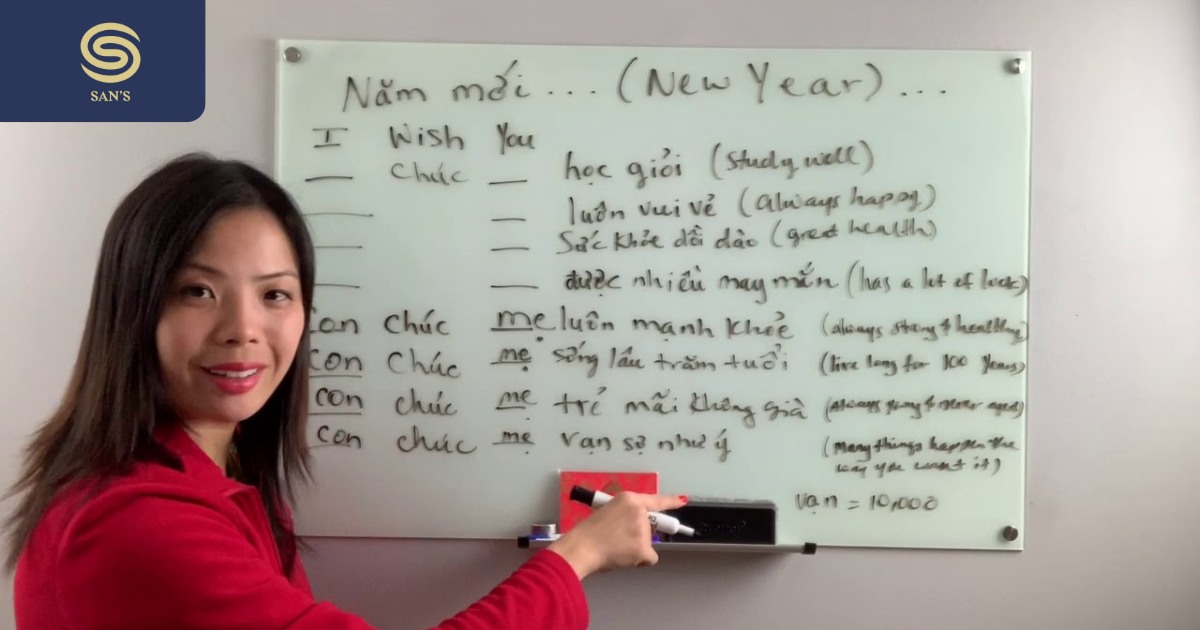
While “Chúc Mừng Năm Mới” is the traditional way to say “Happy New Year,” the literal translation of “happy lunar new year in vietnamese” is becoming increasingly common. To say “happy lunar new year in vietnamese,” you can use a few variations depending on the context. While there isn’t a single, direct translation that is universally used, the sentiment is well understood. You could use “Chúc Mừng Năm Mới Âm Lịch,” which is a literal translation of Happy Lunar New Year. You might also hear, “Năm Mới Vui Vẻ,” which carries the meaning of having a joyful new year. It’s important to emphasize that the feeling behind the greeting is what matters most.
The intention to wish someone a joyous beginning to the new lunar year is at the heart of the expression. Regardless of the exact words used, the sentiment of wishing someone a happy lunar new year in vietnamese is universal during this period. The core message is what counts, making it crucial to convey respect and sincerity when wishing someone a happy lunar new year in vietnamese. The heart behind extending the sentiment of happy lunar new year in vietnamese shows the value and tradition of the celebration. While different variations may exist, the underlying message is always clear: wishing a happy lunar new year in vietnamese full of health and joy.
The Importance of Cultural Understanding
Celebrating a new year in any culture involves more than just understanding the words or the customs; it also means understanding the deep-seated values and beliefs that underpin those practices. For Tết Nguyên Đán, that means understanding the importance of family, respect for elders, and the cyclical nature of life. When you approach the celebration with a genuine desire to understand, you are extending a gesture of respect that is deeply valued. Knowing how to say happy lunar new year in vietnamese is just the tip of the iceberg; taking the time to learn about the history and significance of the holiday adds depth to the experience.
The warmth and hospitality that you may experience during Tet are expressions of the values that make Vietnamese culture so special. The feeling of giving and receiving a happy lunar new year in vietnamese greeting comes from genuine cultural appreciation. The true cultural richness of the celebration is only revealed when one approaches with curiosity and respect for its traditions. Engaging with this celebration in a thoughtful manner not only enriches your own experience but also creates a bridge of understanding between cultures. The act of expressing a sincere happy lunar new year in vietnamese is something that speaks louder than words.
Embracing the Spirit of Tet
The spirit of Tet is more than just a holiday; it’s a feeling, a collective experience of joy, hope, and togetherness. It is a time when families come together to share meals, exchange gifts, and wish each other the best for the coming year. The colors, the sounds, and the tastes of Tet are all woven together to create a vibrant tapestry that celebrates Vietnamese culture and heritage. To truly embrace Tet is to open your heart to the warmth and generosity of the Vietnamese people.
When you extend the wish of a happy lunar new year in vietnamese you’re not just sharing a greeting; you’re sharing a piece of your heart, which is reciprocated by those with whom you’re celebrating. This is a time for reflection and appreciation, as well as for joy and celebration. Part of experiencing Tet is being involved in these interactions and feeling the true message of a happy lunar new year in vietnamese. The joy of Tet is palpable and is something that anyone can experience. The atmosphere of joy and celebration emphasizes the importance of sending a wish for a happy lunar new year in vietnamese.
The Global Celebration of Lunar New Year
While Tết Nguyên Đán is most prominently celebrated in Vietnam, the Lunar New Year is celebrated in many other countries throughout Asia and even across the globe. This global celebration is a testament to the shared heritage of many Asian communities and the universal desire for renewal and good fortune. Each culture has its unique traditions and customs, yet the spirit of celebration and the hope for a prosperous new year remain constant.
Whether it’s the Chinese Spring Festival, the Korean Seollal, or the Vietnamese Tết, there is a common thread that unites all these celebrations. The understanding of the universal nature of this celebration makes it clear why the sentiment of happy lunar new year in vietnamese is one that is recognized and embraced across different countries. The shared cultural values mean that regardless of different variations in greetings, the message of happy lunar new year in vietnamese resonates throughout. It’s an event where diverse cultures are united under the shared sentiment of hope and renewal, and happy lunar new year in vietnamese plays a part in this.
Learning to Say Happy Lunar New Year in Vietnamese
As we have discussed, there are several ways to express happy lunar new year in vietnamese. While “Chúc Mừng Năm Mới” is the most widely known traditional greeting, the phrase happy lunar new year in vietnamese can also be expressed as “Chúc Mừng Năm Mới Âm Lịch” for a more direct translation. However, it is crucial to remember that the intent and feeling behind the greeting are just as important as the specific words.
This means that when you are extending a greeting for happy lunar new year in vietnamese, you are sharing a piece of yourself. The sincerity and warmth you convey will be what people remember most. Learning how to say happy lunar new year in vietnamese is one thing, but expressing it with genuine warmth is something else entirely. Regardless of the words you choose, the heartfelt wish for a happy lunar new year in vietnamese is always welcomed and appreciated.
Personalizing Your Tết Greetings
Beyond the basic greetings, you can personalize your Tết wishes by adding specific sentiments that are relevant to the people you are addressing. You could wish an elderly person health, a young person success, or a friend prosperity. This personal touch shows that you care about them and that you’ve given thought to your greeting. It’s also worth noting that the manner in which you extend your greeting is important. A smile, a hand clasp, or a slight bow all contribute to the sincerity of your message.
The way you say happy lunar new year in vietnamese can have a huge impact, showing genuine respect and consideration for others. It’s not only about what you say, but also how you say it. The tradition and customs add depth to the feeling behind happy lunar new year in vietnamese. When you personalize your wishes and add warmth, you are conveying the true meaning of happy lunar new year in vietnamese.
The Role of Technology in Modern Tết Celebrations
In today’s interconnected world, technology plays a vital role in how we celebrate Tết. Social media platforms are flooded with images of family gatherings, traditional meals, and the vibrant decorations of the festival. Video calls allow families that are separated by distance to come together and share in the joy of the occasion. While technology can’t completely replace face-to-face interactions, it does offer a way for people to feel more connected.
The internet also makes it easier to learn about the traditions and customs of Tết, helping people to better appreciate its cultural significance. Even when using technology, the sentiment of a happy lunar new year in vietnamese can be conveyed powerfully. Many people send e-cards or share posts extending wishes of a happy lunar new year in vietnamese. Technology has allowed for wider and faster spread of the greeting happy lunar new year in vietnamese. While technology is used, it still brings people together and spreads the feeling of a happy lunar new year in vietnamese.
The Evolution of Tết Celebrations
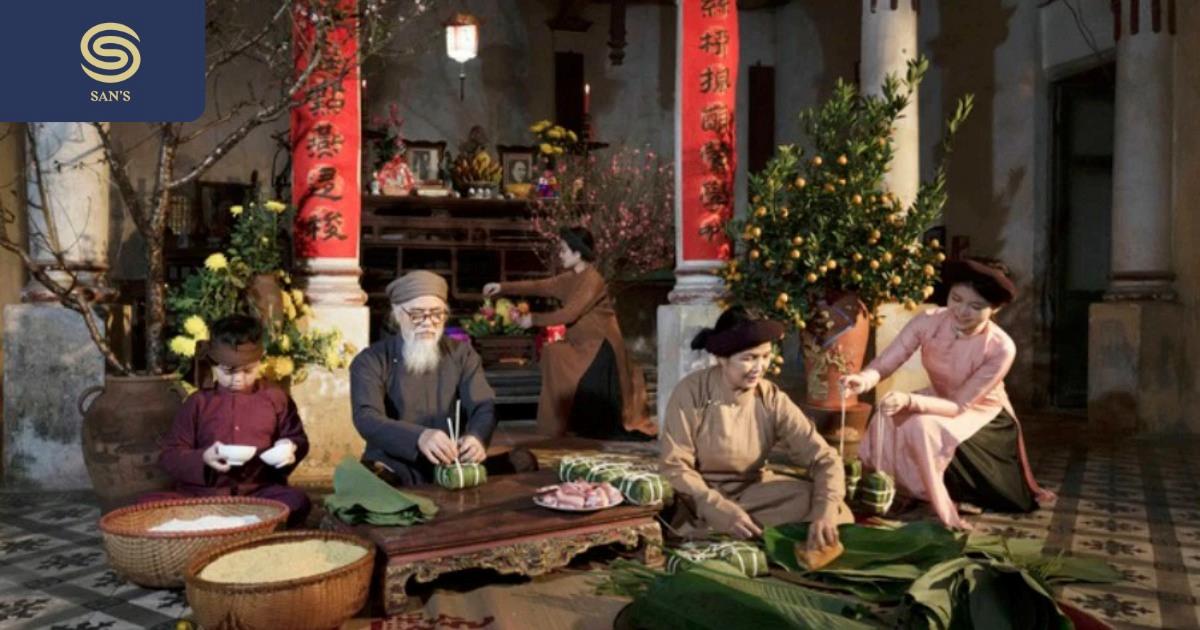
While many traditions of Tết have remained unchanged for centuries, the way people celebrate is constantly evolving. Younger generations have embraced new technologies and social media, while still honoring the core values and customs of their culture. This combination of old and new makes Tet a vibrant celebration that appeals to all ages. For example, while traditional gifts of money in red envelopes (lì xì) remain popular, e-transfers are becoming more common.
The heart of the celebration remains the same and that is to extend warm wishes, such as for a happy lunar new year in vietnamese. The act of expressing a wish for a happy lunar new year in vietnamese is a crucial component of Tet that remains timeless, regardless of cultural changes. This demonstrates how traditions are adaptable and evolve while still retaining their cultural roots, making the phrase happy lunar new year in vietnamese relevant across generations. It is a way to express a timeless feeling in a modern context.
The Importance of Family During Tết
At the heart of Tết Nguyên Đán lies the importance of family. It is a time when families gather from near and far to spend time together, share meals, and reaffirm their bonds. This emphasis on family is a central value in Vietnamese culture, and Tet is a time to celebrate this value. Family reunions are often the most important aspect of Tet. This time of togetherness is something that is cherished and appreciated across generations.
These family interactions during Tet strengthen familial bonds and bring everyone closer, and often includes expressions of a happy lunar new year in vietnamese. The feeling of a happy lunar new year in vietnamese is often strongest when surrounded by loved ones, which highlights its significance. It’s a reminder of the deep connections that form the core of Vietnamese culture, and how a simple greeting such as happy lunar new year in vietnamese can signify so much. The familial aspect of Tet highlights the importance of the sentiment and expression of happy lunar new year in vietnamese.
The Symbolic Decorations of Tết
The decorations of Tet are not merely aesthetic additions; they are laden with symbolism. Peach blossoms (hoa đào) and apricot blossoms (hoa mai) represent new beginnings and good fortune. Kumquat trees (cây quất) symbolize prosperity and abundance. These decorations are meticulously chosen for their symbolic meanings and help to create a festive atmosphere. Homes are thoroughly cleaned and decorated in preparation for the new year.
These decorations fill the environment with positivity and good fortune and set the stage for the expression of a happy lunar new year in vietnamese. It’s a visual celebration of new beginnings and prosperity, enhancing the overall sense of joy. The decorations are an integral part of expressing a wish for a happy lunar new year in vietnamese and contribute to the visual beauty of the festival. The festive decorations are a celebration of the renewal that accompanies the feeling of happy lunar new year in vietnamese.
The Giving of Lì Xì (Lucky Money)
The tradition of giving lì xì (lucky money) is a cherished part of Tết Nguyên Đán. Red envelopes containing money are given to children and unmarried adults as a symbol of good luck and prosperity for the coming year. The tradition extends beyond just receiving money; it is also about the act of giving and sharing good fortune with loved ones. It is a gesture of goodwill and hope for a prosperous year ahead.
Receiving these envelopes is a joyful experience and a way to extend wishes for a happy lunar new year in vietnamese. These red envelopes play an important part in how people convey the sentiments of a happy lunar new year in vietnamese. Receiving lì xì is also associated with the act of extending wishes for a happy lunar new year in vietnamese. This tradition is one of the most anticipated moments of Tet and a good representation of the values that make the festival so special.
Reflecting on the Past and Looking to the Future
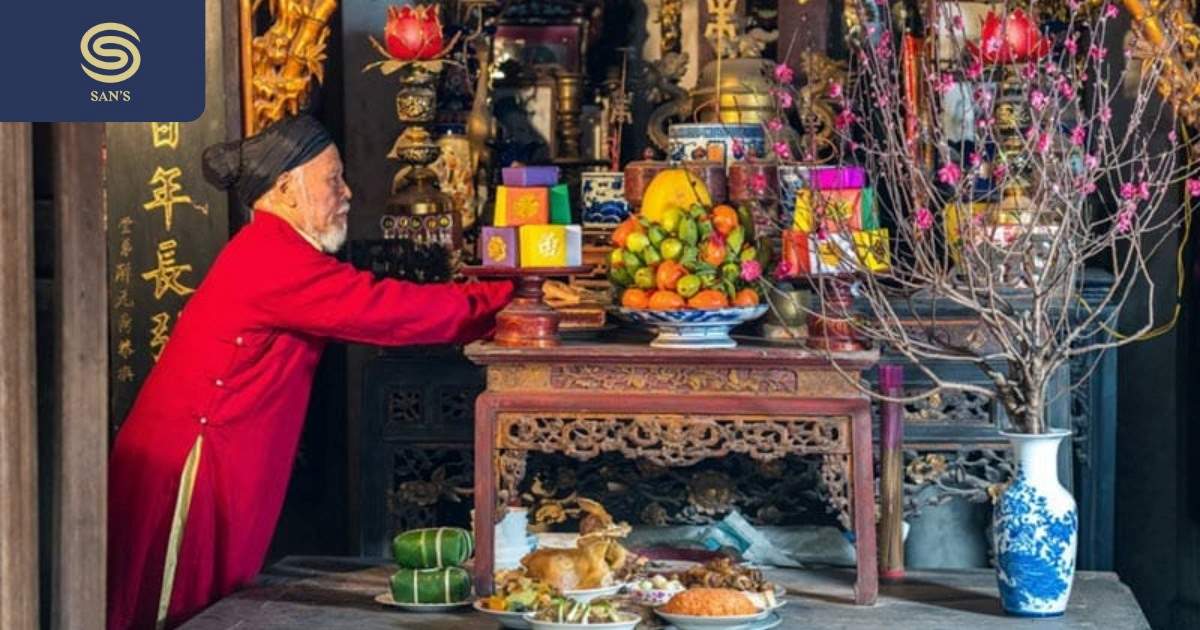
Tết Nguyên Đán is not just about celebrating the new year; it is also a time for reflection on the past year. Many Vietnamese use this time to reflect on their accomplishments and challenges, learning from their experiences and setting new intentions for the year ahead. The new year is often a time to make resolutions and to commit to personal growth. The hope and excitement for the future is just as much a part of the sentiment as is the reflection on the past.
This period of reflection enhances the meaning behind extending a happy lunar new year in vietnamese greeting. It’s about more than just celebration; it’s also about growth and renewal. The sense of a fresh start makes the greeting of happy lunar new year in vietnamese something special and meaningful. This moment of reflection and renewal helps to make the greeting of happy lunar new year in vietnamese something so much more profound.
The Importance of Respect and Gratitude During Tết
During Tết, respect for elders and expressions of gratitude are paramount. Younger generations show respect to their elders by offering greetings and spending time with them. It is a time to acknowledge their wisdom and guidance and to express appreciation for their contributions to the family. It’s also a time to give thanks for the blessings received throughout the past year. The emphasis on gratitude and respect is at the heart of the cultural values that make Tet so unique and the feeling of extending happy lunar new year in vietnamese so important.
The acts of respect and gratitude enhance the feeling behind the greeting of happy lunar new year in vietnamese. Showing appreciation for loved ones and for all that they have contributed makes the message of happy lunar new year in vietnamese much more sincere. The feeling of expressing gratitude emphasizes the importance of conveying a genuine happy lunar new year in vietnamese greeting.
Tết Nguyên Đán is far more than just a new year celebration; it’s a rich cultural experience steeped in history, tradition, and heartfelt sentiments. The act of expressing the wish for a happy lunar new year in vietnamese is an integral part of this celebration and carries a profound meaning of goodwill, respect, and hope.
The true essence of Tet is found in these interactions, and in these moments, the feeling of a happy lunar new year in vietnamese can be shared by people all over the world. By embracing these traditions and sharing the wish of a happy lunar new year in vietnamese, you are celebrating the beauty and cultural richness of the Vietnamese people. The feeling of joy that accompanies the wish of a happy lunar new year in vietnamese is something that can be experienced by everyone.
Here is the “happy lunar new year in vietnamese”. Wishing you a delightful trip to Vietnam! If you’re visiting Vietnam and the capital, Hanoi, you can book a room at San Hotel at the best prices here!
Follow us on Facebook to get the latest travel updates daily: San Hotel Series



